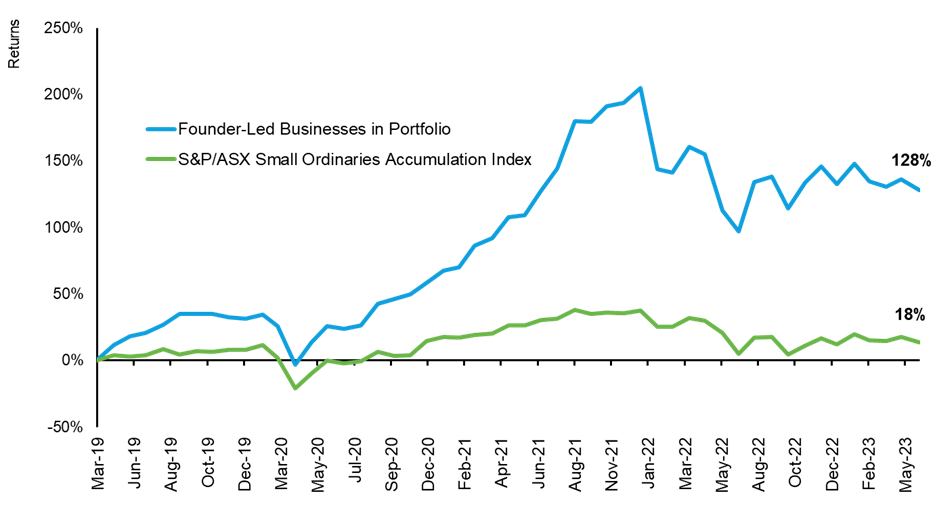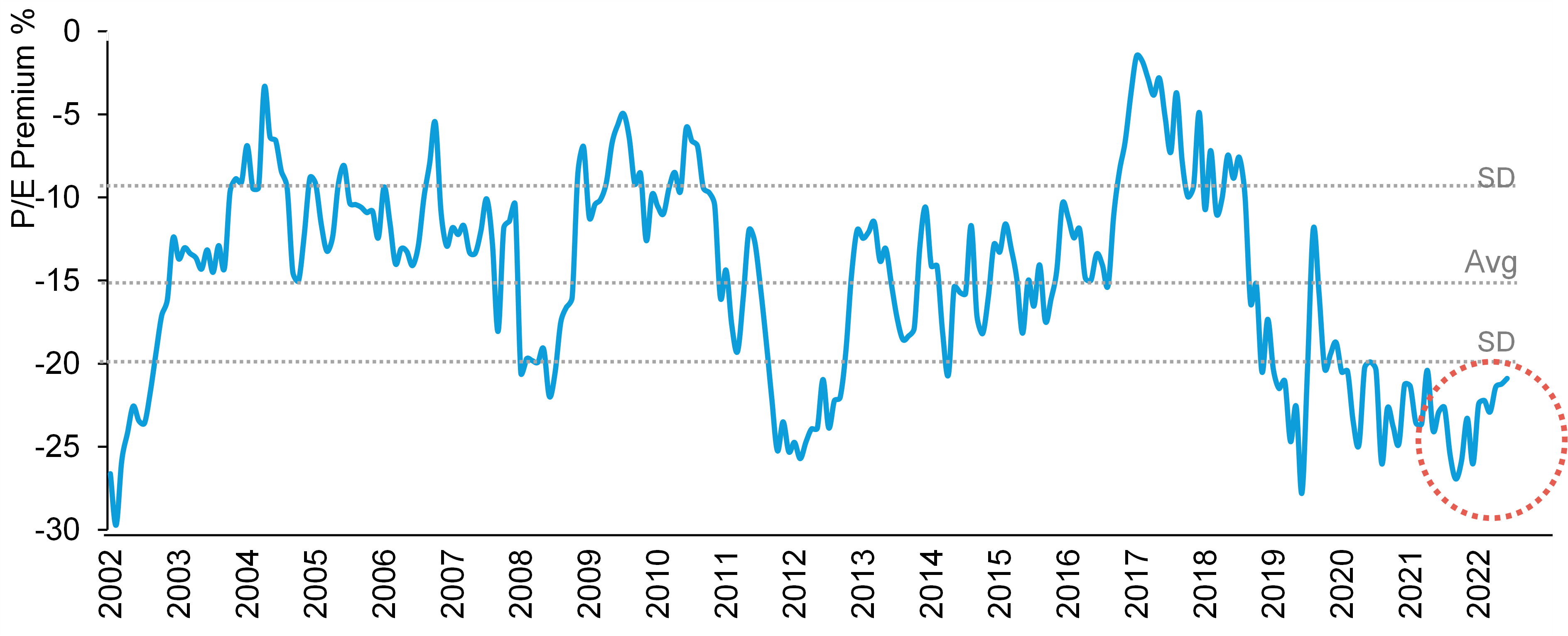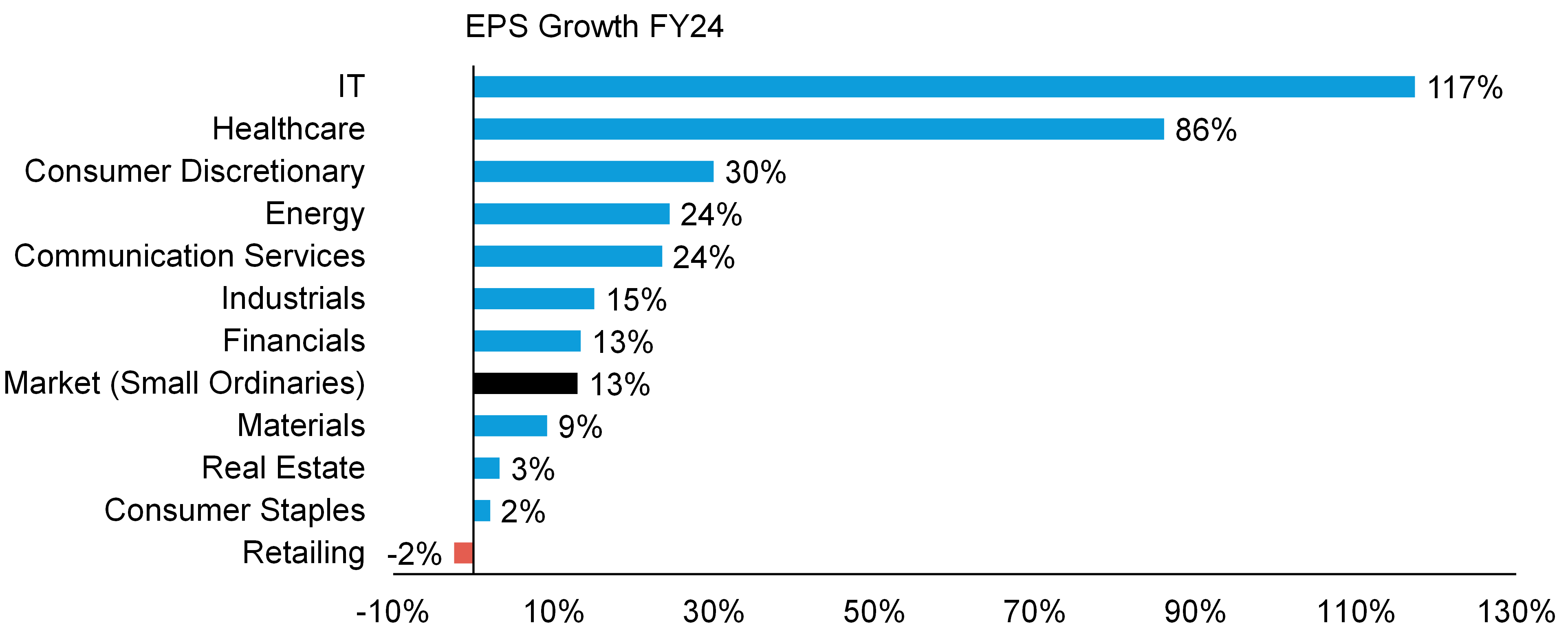The compelling opportunity in small companies
The gap between small and large-cap valuations is prompting a closer look at the value of small caps in a portfolio. Small-cap equities are a ‘land of opportunity’ for a risk-aware active investment strategy.
The key attributes we look for in a small cap company
We seek to invest in outstanding ASX listed businesses that are liquid and profitable whilst they are undiscovered, under-researched and under-owned. Identifying these companies early is key to capitalising on their growth prospects. The sustainability of the business model and the appropriateness of its capital structure are of particular importance to us. We focus on quality companies that have strong balance sheets, a high return on invested capital, affordable valuations, and with a board and management we can back. In addition to this approach, we incorporate ESG considerations into our investment decisions, helping to further reduce quantifiable and unquantifiable investment risks.
The importance of founder-led businesses
In our experience, founder-led businesses generally outperform. When we look at the 15 founder-led businesses which we currently hold in our small-cap strategy over the last 4-years (capture pre and post COVID), as illustrated in Chart 1, these founder-led businesses have outperformed those whose leaders are not founders.
Chart 1: Smaller companies have many more founder-led businesses

In founder-led business, there is a clear alignment of interest, or ‘skin in the game’, that is critical in that incentives tend to drive behaviours. Founders generally have significant shareholdings so they benefit along with other shareholders as the business succeeds for equity investors, not just management. Founders also tend to have a long-term mindset, even if this is at the expense of short-term profits, so long as they believe that these decisions will add positively to shareholder returns. Finally, culture matters to performance. Organisations that are founder-led typically have a stable, consistent yet evolving culture over the long term, and generally one that evolves for the better. You cannot necessarily put a dollar value on the benefit of culture, however a strong company ethos, or reason for being, can drive shareholder value through the value of many working on a common cause.
The valuation gap between small and large caps and the opportunity ahead
The vagaries of 2022, and the impact of rapid rate rises was especially hard on small caps, punishing them harder than large caps for no apparent reason. The impact has been that at mid-2023, the small-cap industrials have been trading at a 21% discount to large cap industrials, well below their long-term average, as illustrated in Chart 2. In fact, small caps are trading a full standard deviation below their 20-year valuation average.
Chart 2: Small vs large industrials: a 21% discount, below long-term average

As investors who focus on earnings and earnings growth as a strong indicator of a stock’s worth, we think this discount to large-cap valuations is not sustainable when you compare consensus earnings growth expectations for FY24, as illustrated in Chart 3.
Chart 3: The disparity in EPS growth outlook for small companies compared to large

Small-cap industrials still offer significant EPS growth of 21% based on consensus outlook, and superior to that being offered by large-cap industrials at 11%. This is offering compelling value to small-cap investors relative to large. The key questions is, where is this EPS growth expected to be in the marketplace? Chart 4 illustrates the consensus view as to where EPS growth is expected in FY24.
Chart 4: Where the market thinks EPS growth will come in FY24

After a tough 2022, there is a wide divergence in growth expectations across sectors. This is an opportunity-rich environment for small-cap investors, with quality names in all these sectors, and significant opportunity as small companies begin to rerate on value compared to large caps.
Our preferred stocks right now and why
Two stocks have captured our interest lately, Imdex and Lifestyle Communities. While this is not financial advice, it helps illustrate the types of companies we think fit the characteristics of our investment approach.
Imdex (ASX: IMD) is a leading global Mining-Tech company enabling contractors and resource companies to find and define ore bodies with precision and speed through a range of their products. These include drilling optimisation products, rock knowledge sensors and real time data and analytics. There has been a significant capex underinvestment by resources companies, as they focus on value not volume, therefore depleting their reserves and resources globally. We are attracted to the sustainability of the Imdex businesses model, with its rental/SaaS revenue, dominant market share in core orientation tooling, high return on invested capital and free cash flow generation. The recent acquisition of Devico is highly strategic given it is a leader in directional drilling and the #2 player in many sensor technologies behind Imdex as #1. Headquartered in Europe, the acquisition expands IMD’s global footprint and further diversifies the business into higher-quality, and higher margin tools and technologies portfolio. The Fund recently participated in the capital raising to fund the acquisition, adding to our existing position having followed the company for over a decade.
Lifestyle Communities (ASX: LIC) is a founder-led organisation, providing affordable, resort style communities in Victoria via a land lease model selling homes at 70-80% of the median house price. LIC is supported by strong industry fundamentals with an ageing population. We liked the sustainability of the business model, supported by capital recycling of development sites, and the sustainable recurring income from rental revenue and DMF revenue. DMF revenue is becoming more predictable and significant as the business grows (and is higher margin). LIC has a strong pipeline of growth with 24 sites owned or currently under development, with sites growing by two per annum, with the ability to expand to three or four new sites per year as need.
The outlook for small companies moving into FY24
We believe calendar 2023 will be a tale of two halves. The first half, many Australian mortgage holders have faced significant increases in their mortgage repayments as fixed mortgages roll- off into higher cost variable rates. These are expected to place strain on household budgets and discretionary spend as the consumer repositions for these higher debt costs. This impact however may still take some time to flow through as excess savings are drawn down.
Risk remains high across a number of fronts, including monetary policy, economic slowdown, and a weakening consumer. Inflation remains elevated. In a tighter economic environment, the geopolitical risks are pronounced. Escalating tensions in the war between Ukraine and Russia, and Russia’s growing distance from the rest of the world remains concerning.
Although the Australian economy is slowing on contractionary monetary policy, we believe Australia’s resource economy is well-placed to outperform other developed markets with below- trend growth, but no recession.
While Ausbil’s house view is that earnings growth will be hard to come by in FY24, key sectors and individual companies will still offer strong EPS growth opportunities well above consensus. With this in mind, we see ongoing support for earnings growth in quality industrials that exhibit defensive earnings that are less cyclical, and with some relative pricing power. Other sectors include Resources, and in Energy given the shock we have experienced from the invasion of Ukraine. In Resources, we have been invested extensively across the decarbonisation thematic, in copper, nickel, lithium and rare earths. We are avoiding sectors that are cyclical, over-exposed to slowing economic growth, and whose earnings are adversely impacted by inflationary pressures. This includes construction, retailing, some consumer discretionary and housing. We think inflation has peaked. As we see it slow, we will need to consider the post-inflation positioning for our portfolios. In the ex-100 space, there are many names that we expect will experience an element of re-rating in 2023 as rate rises end, and the market stabilises with falling inflation.
In terms of preparing our thinking, today is when we need to be considering what sectors will benefit as inflation falls back, when central banks have ceased raising rates, and looking for the seeds of the next expansion. The complex issue is, when does this occur? Regardless, while we believe earnings growth in 2023 will undershoot the last two years, there are companies with earnings upside that are yet to be appreciated by consensus. There are also quality leaders whose earnings are immune to the vagaries of the cycle. This is where we are seeing the potential for outperformance in FY23 and FY24.
Style Agnostic
Ausbil’s investment processes allow us to exploit the inefficiencies across the entire market, at all stages of the cycle and across all market conditions.

2 stocks mentioned
1 fund mentioned

